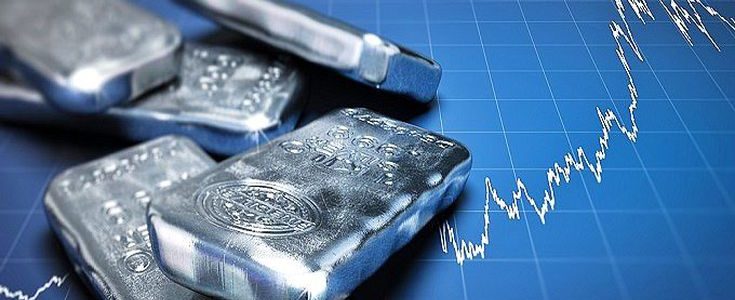Month: December 2020
Best Silver Mining Stocks for 2021
Best Silver Mining Stocks for 2021.
Volatility in silver is nothing new. Depending on the mood of the market, silver is either viewed as a precious or industrial metal. As a precious metal, silver takes on the properties of gold. But in the case of industrial metal, it trades more in line with copper, zinc, and aluminum.
Industrial metals are much more sensitive to global economic developments that drive supply and demand. For these reasons, silver tends to exhibit higher volatility than gold and this year has been a great example of that. After enduring a miserable start to 2020, the metal more than doubled from its late-March lows, while gold prices rose by close to 40 percent.
Why Invest in Silver Mining Stocks?
After taking a nosedive to the $11 range in March 2020 amid the COVID-19 pandemic, silver has scored the biggest monthly gain in 9 years as U.S.-China tensions boosted gold prices.
What we are seeing that gold is approaching closer to its all-time highs in US dollars but silver has been consolidating and basically trading sideways since 2011. If silver breaks its 2016 high in the $20 range, it will be very bullish for silver and silver mining stocks.
“COVID-19 and the economic fallout that followed has clearly impacted industry/technology and jewelry demand, with 75% of the global silver demand… dependent on the consumer who has been either temporarily or permanently wounded by the downturn,” said Steven Dunn, head of exchange-traded funds at Aberdeen Standard Investments.
“Unlike gold, silver may get a boost as major economies ease coronavirus-linked restrictions which will only fuel hopes of an economic recovery,” he added.
We are already observing huge gains in the silver mining stocks, people who were lucky to pick undervalued gold and silver mining companies have already seen more than 100% gain. However, when you look at the bigger picture, the stock prices of most silver mining companies are still near the late 2019 range and still undervalued.
If you search the net for silver mining companies, you will find many articles talking about large-cap silver mining stocks but the purpose of this article is to highlight microcap silver mining companies with multi-bagger returns potential. Before going into the details I’ll discuss the reasons to invest in silver and silver mining companies but if you are already aware of the reasons, you can read my article the Top 10 Junior Silver Mining Companies.
Silver Outperforms Gold In Bull Markets
Silver is a very small market—so small, in fact, that a little money moving into or out of the industry can impact the price to a much greater degree than other assets (including gold). This greater volatility means that in bear markets, silver falls more than gold. But in bull markets, silver will soar much further and faster than gold.
Let’s see how much more silver gained than gold in the two biggest precious metals bull markets in the modern era:
|
|
Gain from 1970 low to 1980 high |
Gain from 2008 low to 2011 high |
|
Gold |
2,328% |
166% |
|
Silver |
3,105% |
448% |
You might say silver is gold on steroids!
We can expect this outperformance to repeat in the next bull market, too, because the silver industry remains tiny.
Peter Schiff states, “Silver has hit an all-time high of $49 per ounce twice – in January 1980 and then again in April 2011. If you adjust that $49 high for inflation, you’re looking at a price of around $150 per ounce. In other words, silver has a long way to the run-up. As one analyst put it, “With the long-term downside potential of silver very low versus its current valuation, the risk/reward is one of the best investments on the planet.”
Growth in Industrial Usage
Believe it or not, we don’t go one day without using a product that contains silver.
Silver is used in nearly every major industry, from electronics and medical applications to batteries and solar panels. Silver is everywhere, whether you see it or not. As Mike says in his book, “Of all the elements, silver is the indispensable metal. It is the most electrically conductive, thermally conductive, and reflective. Modern life, as we know it, would not exist without silver.” Due to these rare characteristics, the number of industrial applications for silver has skyrocketed. In fact, the industry now gobbles up more than half of all silver demand.
Silver is used in a wide number of industries and products, and many of those uses are growing. Here are a few examples:
• A cell phone contains about one-third of a gram of silver, and cell phone use continues to climb relentlessly worldwide. Gartner, a leading information technology research and advisory company, estimates a total of 5.75 billion cell phones will be purchased between 2017 and 2019. That means 1.916 billion grams of silver, or 57.49 million ounces, will be needed for this use alone!
• The self-heating windshield in your new Volkswagen will have an ultra-thin invisible layer of silver instead of those tiny wires. They’ll even have filaments at the bottom of the windshield to heat the wipers so they don’t freeze to the glass.
• The Silver Institute estimates that silver use in photovoltaic cells (the main constituents of solar panels) will be a whopping 75% greater in 2018 than it was just 3 years earlier.
• Another common industrial use for silver is as a catalyst for the production of ethylene oxide (an important precursor in the production of plastics and chemicals). The Silver Institute projects that due to growth in this industry, 32% more silver will be needed by 2018 than what was used in 2015.
There are a lot more examples like this, but the bottom line is that due to its unique characteristics, industrial uses for silver continue to expand, which means we can reasonably expect this source of demand to remain robust. But that’s not the whole story… unlike gold, most industrial silver is consumed or destroyed during the fabrication process. It’s just not economic to recover every tiny flake of silver from millions of discarded products. As a result, silver is gone for good and limits the amount of supply that can return to the market through recycling.
So not only will the ongoing growth in industrial uses keep silver demand strong, millions of ounces cannot be reused.
Increase in Global Demand
The global demand for silver is increasing. Virtually all major government mints have seen record levels of sales, with most already operating at peak production. Surging demand is nowhere more evident than China and India which have long histories of cultural affinity toward precious metals. And with their populations growing their tremendous appetite will continue.
The growth of silver jewelry in India has soared to more than 600% since 2006. China was consuming around 40 million ounces of silver in 2000, now the usage has increased to more than 200 million ounces
Physical Metals Supply Deficit
When palladium was skyrocketing in early 2020, two very authentic sources SDBullion and Sprott Money indicated that gold, platinum and, silver also are very likely to experience the same kind of parabolic moves as platinum and rhodium. The fundamental reason behind the much-anticipated rise in the prices remains the same which mainly is a shortage of physical metals supply.
As mentioned in “The Magic Palladium Bullet” by Craig Hemke at Sprott Money, the actual amount of vaulted physical precious metals is way less compared to the tradable ones in the form of COMEX contracts. There are 3.72 ounces of tradable silver exposure for every one physical ounce in the vaults. For gold, the ratio of digital to physical leverage is 5.85 times whereas for palladium it is 67.3 times.
Higher Leverage: Current Gold to Silver Ratio
Gold to silver ratio (GSR) simply tells how many silver ounces can be bought with an ounce of gold. To find the ratio, divide the current gold price by the price of silver. Over the past fifty years, the GSR has moved between 20 and 100, averaging about 60 which means that the silver mining companies have nearly two to one leverage over the gold miners.
GSR is currently 1:95 after reaching an all-time high of 1:126.4 in March 2020. The highest monthly GSR of 1:99.47 was previously set in January 1991 amid an eight-month U.S. recession.
The GSR helps precious metals investors to identify if gold is undervalued (or overvalued) compared to silver? At the current ratio of 95:1, a trader could sell an ounce of gold for 88 ounces of silver, compared to the historical average of 60 silver ounces to one gold ounce. All it means that silver right now is extremely undervalued compared to gold which a lot of people have not recognized yet. The silver mining companies have not yet received the attention for the potential value, the leverage that they currently have in terms of gold price.
The historically all-time high GSR is a warning to investors and it could correct at any time, either meaning a move up in silver prices or a move down in gold prices. Since gold has been holding up very well despite the COVID-19 pandemic, trade deal with China, and a continued strong dollar, we believe the gold price is not going to fall drastically and silver will need to catch up. History repeats itself, it did that last time in 2011, and there is no reason why it wouldn’t again.
According to Citi gold will be topping $2,000 in the next 12 to 24 months, so a GSR in the 50s means silver could easily reach $40 soon.



